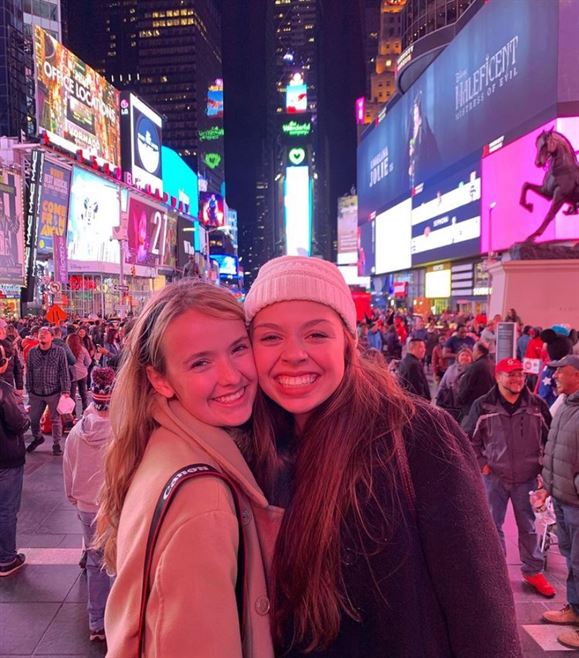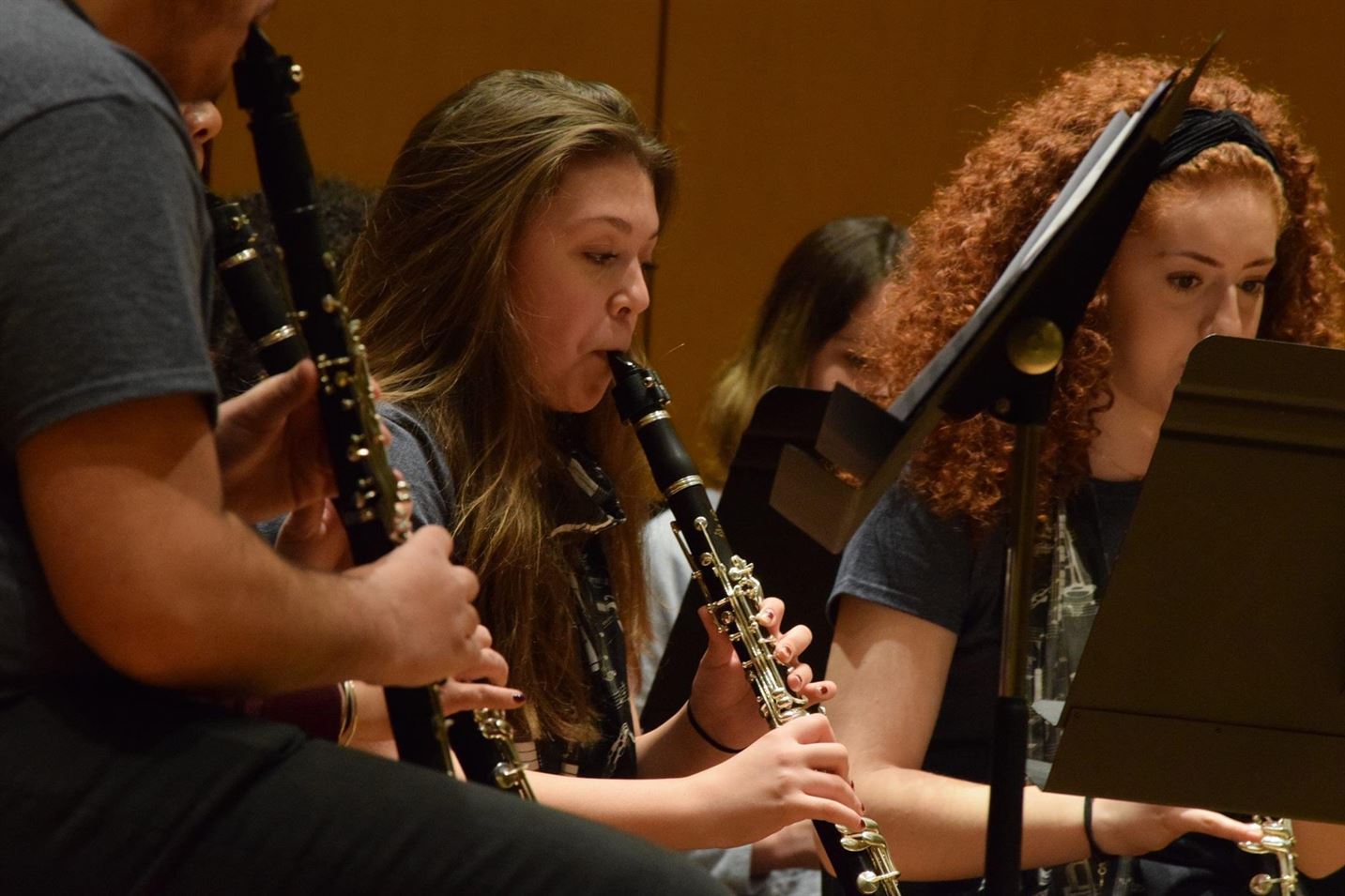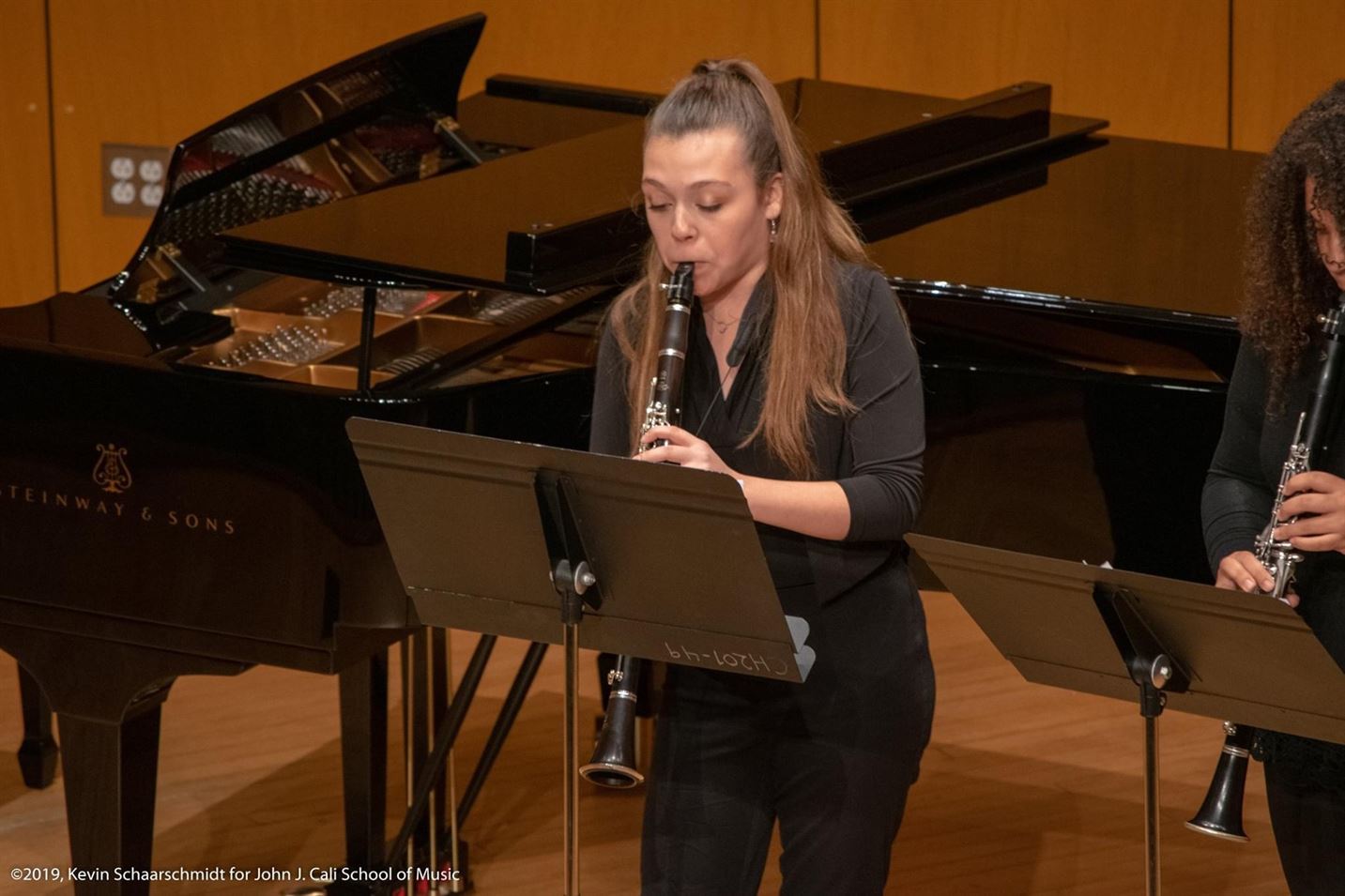Julia Marra, a junior music education major, grew up in a musical household.
Her father hired a Craigslist pianist to teach her and her younger brother how to play the piano. Though her sibling stuck with it and is now an evolving classical pianist, Marra chose to play a different instrument. Having ventured into the world of clarinet, this became the primary instrument she ended up playing.
After doing research and realizing the success of the John J. Cali School of Music, Marra applied only to Montclair State University. However, she believed she would not get into the music program because she did not have the equivalent experience in lessons and auditions as most students who commit to the program.
She planned to apply as an undecided student and reapply to the music program the second semester of her freshman year. She did not allow the fear of rejection to stray her away from trying; instead, she completed the audition because she bonded with Montclair State.
“I felt like I belong here,” Marra said. “It felt like I could do and strive for what I wanted at [Montclair State].”
Those words manifested into reality when she shockingly received an admission letter after her first audition.
Music education is for those who are trained to teach music in schools, whether it be in regards to K-12 education or secondary education. Rather than renting and purchasing textbooks for each class she takes at Montclair State, Marra rents instruments.
To earn her bachelor’s degree, Marra has to take one method class each semester until she graduates. In these classes, she learns percussion, string instruments, brass and woodwinds. Marra is taught how to play instruments to the point where she understands an adequate amount to be able to teach her future students about them.
The musician embraced the music program even after the coronavirus (COVID-19) pandemic spread through the nation.
Following the social distancing guidelines, Marra limits the amount of contact she has with people by practicing in her Hawk Crossings dormitory rather than the private band practice rooms in the John J. Cali School of Music.
Currently learning how to play the trombone, she did not realize how restricting a dorm room was until she stretched the bar of her horn to play a note and it repeatedly hit her desk. She even has to warn her roommates and neighbors before she plays, apologizing for the noise that will permeate through the walls.
Marra’s roommate and best friend, Sarah DiPippa, a junior television and digital media major, embraces the melodies that ring at different hours in the day. She admires the average of 12-plus hours her roommate puts into practicing before, during and after her classes.
“It’s interesting to see how much hard work goes into it,” DiPippa said. “She has more classes than the average person. It’s fun hearing her play. It’s not a bother at all.”

Sarah DiPippa (left) admires the time Marra (right) puts into practicing her instruments.
Photo courtesy of Jordan Nosenchuk
Marra says her transition to remote learning was more positive than she initially thought it would be, but never imagined how it would turn out.
“If you would have told me a year ago that my lesson with my clarinet teacher would be on FaceTime, I would laugh at you and tell you that she can’t use a computer,” Marra said.
Before the pandemic, Marra was in a classroom setting. Just by looking at the position of her fingers or body posture, the instructor could identify if the note being played from her clarinet was too flat or sharp. Now, the instructor has to keenly listen through the lagging FaceTime call to hear if the melody is correct.
Marra misses being in person at the John J. Cali School of Music.
“[Being there] reminds me of being in high school,” Marra said. “Each person has their own locker to store their instruments. Students and staff work collaboratively and learn from each other and you hear different instruments all the time.”
Anthony Kalanick, a junior music education major, says playing with Marra has been a transformative experience for both of them.
“Our freshman year together, both earning a seat in one of the top ensembles, to now playing together and constantly recording within our studio has been a journey that feels like [it] started so long ago,” Kalanick said. “But now we’re about to enter our senior year; both of our expanding skills as instrumentalists continue to push us and challenge us to do our best.”
The passion Marra showcases in these classes and throughout her time at Montclair State is what friends and family see now and what her future students will see later as she furthers her career in musical education.




